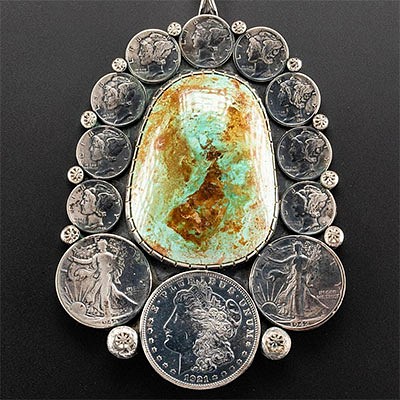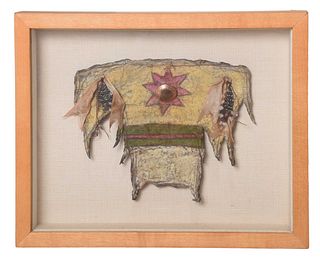19th C. Solomon Islands Arm Bands / Ambegwaro (pr)
Lot 118d
About Seller
Artemis Gallery
686 S Taylor Ave, Ste 106
Louisville, CO 80027
United States
Selling antiquities, ancient and ethnographic art online since 1993, Artemis Gallery specializes in Classical Antiquities (Egyptian, Greek, Roman, Near Eastern), Asian, Pre-Columbian, African / Tribal / Oceanographic art. Our extensive inventory includes pottery, stone, metal, wood, glass and textil...Read more
Estimate:
$4,000 - $6,000
Absentee vs Live bid
Two ways to bid:
- Leave a max absentee bid and the platform will bid on your behalf up to your maximum bid during the live auction.
- Bid live during the auction and your bids will be submitted real-time to the auctioneer.
Bid Increments
| Price | Bid Increment |
|---|---|
| $0 | $25 |
| $300 | $50 |
| $1,000 | $100 |
| $2,000 | $250 |
| $5,000 | $500 |
| $10,000 | $1,000 |
| $20,000 | $2,500 |
| $50,000 | $5,000 |
| $100,000 | $10,000 |
| $200,000 | $20,000 |
About Auction
By Artemis Gallery
Feb 25, 2021
Set Reminder
2021-02-25 10:00:00
2021-02-25 10:00:00
America/New_York
Bidsquare
Bidsquare : American Frontier | Ethnographic | Tribal Art
https://www.bidsquare.com/auctions/artemis-gallery/american-frontier-ethnographic-tribal-art-6449
Featuring historical examples from the American, Spanish, and Mexican frontiers, as well as Native American, Ethnographic, Tribal, Oceanic, Spanish Colonial, more. All items offered for sale have been legally acquired, are legal to sell and are guaranteed to be as described or your money back. Artemis Gallery info@artemisgallery.com
Featuring historical examples from the American, Spanish, and Mexican frontiers, as well as Native American, Ethnographic, Tribal, Oceanic, Spanish Colonial, more. All items offered for sale have been legally acquired, are legal to sell and are guaranteed to be as described or your money back. Artemis Gallery info@artemisgallery.com
- Lot Description
Oceania, Solomon Islands, ca. 19th century CE. A pair of striking, beautifully preserved arm bands, known as "ambegwaro", made of many different colors of shell, formed into disc-shaped beads, painstakingly woven onto a textile backing with long strings for attachment at the sides. The face of each - they are nearly identical - contains a repeated diamond pattern that is meant to represent fish. Ambegwaro may be worn on the upper arms, or, more rarely, around the wrists or ankles. They are generally worn by men, but sometimes women wear them on their wedding days. Size, not including the ties at either end: 9" W x 4.5" H (22.9 cm x 11.4 cm); 8" H (20.3 cm) on included custom stand.
From the National Gallery of Australia: "Strings of these beads were created by women in villages along the Langalanga Lagoon on the west coast of Malaita and acted as a form of currency across the south-eastern Solomon Islands... Great care and attention was taken in creating armbands such as these, for they were the equivalent of very expensive jewellery, a display of the wearer’s wealth. The currency value of each armband was determined by the tightness in production of the geometric designs and the richness of coloration of the red shells; in the early twentieth century a foot length of red shell beads was worth around a shilling in Malaita, a considerable sum."
See a similar example at the National Gallery of Australia (NGA 2008.806.A-B).
Provenance: private Hawaii, USA collection
All items legal to buy/sell under U.S. Statute covering cultural patrimony Code 2600, CHAPTER 14, and are guaranteed to be as described or your money back.
A Certificate of Authenticity will accompany all winning bids.
We ship worldwide and handle all shipping in-house for your convenience.
#154585Both are in beautiful condition with rich patina and very slight fraying to woven components. A single tie from one of them may be lost.Condition
- Shipping Info
-
All shipping is handled in-house for your convenience. Your invoice from Artemis Gallery will include shipping calculation instructions. If in doubt, please inquire BEFORE bidding for estimated shipping costs for individual items.
-
- Buyer's Premium



 EUR
EUR CAD
CAD AUD
AUD GBP
GBP MXN
MXN HKD
HKD CNY
CNY MYR
MYR SEK
SEK SGD
SGD CHF
CHF THB
THB















